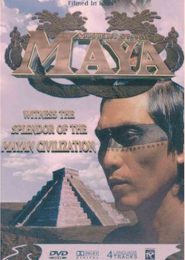Japan: Memoirs of a Secret Empire (2004)
Japan: Memoirs of a Secret Empire is a captivating historical documentary series that originally aired on PBS in 2004. This three-part program delves into Japan’s medieval era, focusing particularly on the period when the country was under the rule of the Tokugawa Shogunate from the 17th to the mid-19th century.
Episode 1: The Way of the Samurai In the early 16th century, Japan was a warlike society governed by samurai and their powerful daimyo warlords. The arrival of Portuguese merchants in 1543 marked a significant moment—the first time Europeans set foot on Japanese soil. Missionaries swiftly embarked on a mission to convert the nation to Christianity. Simultaneously, a young samurai named Tokugawa Ieyasu was born into a low-ranking daimyo family. As a pledge of loyalty, he spent much of his childhood as a hostage. Upon his release, Ieyasu reclaimed his family’s domain and aligned himself with influential rulers like Oda Nobunaga and his successor, Toyotomi Hideyoshi. Hideyoshi granted Ieyasu a small fishing village called Edo (later known as Tokyo) and a vast territory to govern. However, their alliance remained uneasy. When Hideyoshi passed away, he entrusted Ieyasu with command until his true heir, young Hideyori, could rule. Ieyasu’s path to total control faced challenges, including daimyo rebels. Ultimately, he emerged victorious at the Battle of Sekigahara, earning the title of shogun. His final obstacle? Hideyori. In 1614, Ieyasu renounced his allegiance and attacked Osaka Castle, leading to a dynasty that would endure for over 250 years.
Episode 3: The Return of the Barbarian By 1690, Japan had become entirely isolated from the outside world, except for a small community of Dutch traders. Among them was German Doctor Engelbert Kaempfer, whose writings provided valuable insights into daily life in Japan. During this time, culture and commerce flourished. However, the ruling daimyo warlords and their samurai armies grew restless. Shogun Tsunayoshi presided over a mix of art, education, and the introduction of the “Laws of Compassion.” Edo attracted a diverse crowd, including samurai, geisha, courtesans, merchants, writers, and actors. Interest in Western science increased, challenging Japan’s policy of isolation. In 1853, American Commodore Matthew C. Perry sailed into Edo Bay, demanding the formal opening of the nation. Realizing resistance was futile, Japan negotiated treaties with the U.S. and other Western countries. A decade later, the samurai class disbanded, and the Tokugawa Shogunate came to an end after 265 years of isolation. Thus began modern Japan.
Japan: Memoirs of a Secret Empire brings to life the untold story of a mysterious empire, its interactions with the West, and the forging of a nation that would emerge as one of the most influential countries globally.




